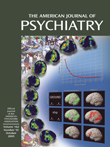Dr. Kendler Replies
To the Editor: In this brief letter, I cannot respond fully to the issues raised by Dr. Joseph or provide detailed references to support my position. Dr. Joseph and I disagree in four ways in the interpretation of the accumulating literature in psychiatric genetics. First, in examining family twin and adoption studies of the major psychiatric disorders, I concluded in my article that the evidence strongly supports the hypothesis that genetic factors play a significant role in the etiology of these conditions. I did not assert that individual studies are free from methodologic problems. Indeed, in studying human populations by observational means, there can be no such thing as a perfect study. However, in examining the studies carefully and knowing—for example, that twin and adoption studies have different potential biases but reach the same conclusion for the disorders in which both methods have been used—it becomes very unlikely that the pattern of observed results could have arisen from methodological biases alone.
Second, Dr. Joseph is concerned about the equal-environment assumption as a significant bias in twin studies. I share his concern, but the equal-environment assumption has been examined in a number of empirical studies. Although there is a bit of evidence that this bias might be operative in some disorders, studies that have corrected for its effects typically find only small changes in heritability estimates. Although the equal-environment assumption is probably not perfectly true, evidence to date strongly suggests that the biases introduced thereby are quite modest.
Third, Dr. Joseph argues that current efforts at gene finding for psychiatric disorders have been unsuccessful. Although there certainly have been problems with replication, I disagree with his interpretation. For example, a recent well-done meta-analysis of schizophrenia linkage studies identified a number of genomic regions with substantial cross-study agreement (1). Several susceptibility genes for schizophrenia are beginning to be replicated at rates that are hard to explain if the original findings were false positive (2). I recently summarized this evidence for dysbindin in the Journal(3), and since then, two further positive reports have been published (4, 5).
Fourth, unlike Dr. Joseph, I judged that it is a priori likely that genes do contribute to variation in human behavior and the risk for psychiatric disorders. Behavior is instantiated in our brains, which are the product of evolution. The evidence that genetic factors influence behavior in other animals is overwhelming. As Darwin recognized, behavior is as much the subject of evolution as physical traits. Is it really plausible that humans would be the only species whose behavior is unrelated to our genetic makeup? It is one thing to criticize the methodology of specific studies. It is quite another to suggest, as Dr. Joseph does, that we reject the results of an entire field of scientific inquiry. This might have been warranted for some pseudoscientific systems, such as astrology, alchemy, and the Ptolemaic astronomic system. It is highly unlikely that modern psychiatric genetics will be judged by future historians of science to be in such company.
Reprints are not available; however, Letters to the Editor can be downloaded at http://ajp.psychiatryonline.org.
1. Lewis CM, Levinson DF, Wise LH, DeLisi LE, Straub RE, Hovatta I, Williams NM, Schwab SG, Pulver AE, Faraone SV, Brzustowicz LM, Kaufmann CA, Garver DL, Gurling HM, Lindholm E, Coon H, Moises HW, Byerley W, Shaw SH, Mesen A, Sherrington R, O’Neill FA, Walsh D, Kendler KS, Ekelund J, Paunio T, Lonnqvist J, Peltonen L, O’Donovan MC, Owen MJ, Wildenauer DB, Maier W, Nestadt G, Blouin JL, Antonarakis SE, Mowry BJ, Silverman JM, Crowe RR, Cloninger CR, Tsuang MT, Malaspina D, Harkavy-Friedman JM, Svrakic DM, Bassett AS, Holcomb J, Kalsi G, McQuillin A, Brynjolfson J, Sigmundsson T, Petursson H, Jazin E, Zoega T, Helgason T: Genome scan meta-analysis of schizophrenia and bipolar disorder, part II: schizophrenia. Am J Hum Genet 2003; 73:34–48Crossref, Medline, Google Scholar
2. Owen MJ, Williams NM, O’Donovan MC: The molecular genetics of schizophrenia: new findings promise new insights. Mol Psychiatry 2004; 9:14–27Crossref, Medline, Google Scholar
3. Kendler KS: Schizophrenia genetics and dysbindin: a corner turned? (editorial). Am J Psychiatry 2004; 161:1533–1536Link, Google Scholar
4. Numakawa T, Yagasaki Y, Ishimoto T, Okada T, Suzuki T, Iwata N, Ozaki N, Taguchi T, Tatsumi M, Kamijima K, Straub RE, Weinberger DR, Kunugi H, Hashimoto R: Evidence of novel neuronal functions of dysbindin, a susceptibility gene for schizophrenia. Hum Mol Genet 2004; 13:2699–2708Crossref, Medline, Google Scholar
5. Funke B, Finn CT, Plocik AM, Lake S, DeRosse P, Kane JM, Kucherlapati R, Malhotra AK: Association of the DTNBP1 locus with schizophrenia in a US population. Am J Hum Genet 2004; 75:891–898Crossref, Medline, Google Scholar



